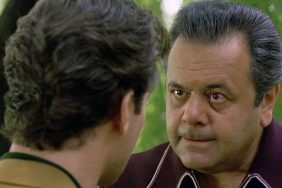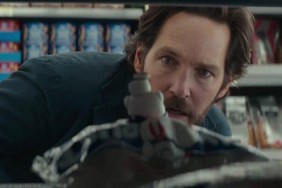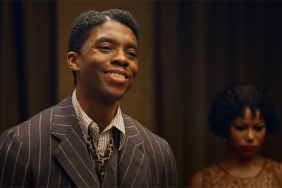How do we define what it is to be “macho” and who makes that decision? From the time children are born they are given toys, clothing and media objects that define their gender. This is the way it has been since the beginning of time and it will only change when we become more aware of the ways in which we participate within gender-defining culture and work to modify it. In this weekly column, The Myth of Macho, we study how film artists have been struggling with depicting masculinity over the years. It can be celebratory and fun as viewed in the work of Arnold Schwarzenegger or Tango & Cash, challenging and serious like Full Metal Jacket or Lethal Weapon, or it can end up in a set of films like this week that, while garnering high audience appeal, attracted enough critical controversy to last up until the present day.
This week’s topic, Death Wish (Michael Winner, 1974), highlights masculinity in a way that was not discussed at the time of release due to the fact that the film’s storyline stuck in the craw of many viewers. Instead of taking the chance to look at the issues of masculine identity being raised or gender role definition, critical hackles were raised sky high by the explicit violence, anarchic depictions of urban landscapes and vigilante themes. While these narrative elements were certainly spectacular enough to guide critical discussion away from the primary focus of the film, they were not enough to explain the work in its entirety. Death Wish is a more complex film, far more than most people gave it credit for. The series evolves into a different animal, for better or for worse (depending on who you ask), but each of those films still retains a modicum of the same fascinating deconstruction of masculine energies that the first one began with. For the purposes of our discussion, we will be mainly concentrating on the first film, although I firmly advocate a “Death Wish film fest day” as it really does bring up some interesting issues geographically, for media relations and in the manner of the portrayal of women.

Based on a book by Brian Garfield, Death Wish was originally supposed to star Jack Lemmon and be directed by Sidney Lumet. When Dino De Laurentiis replaced the initial producer of the film, the roles of lead actor and director changed to Charles Bronson and Michael Winner. Garfield’s initial material did not create an environment that was meant to celebrate violence. According to most, the filmed version did.
Death Wish tells the story of architect Paul Kersey whose wife and daughter are violently attacked by muggers who follow the two women back to their home. His wife is left dead and his daughter is left in a state of mute catatonia as a result of being sexually brutalized. Kersey’s response to the incident is a slow burn, and his face never shows any emotion, something the critics never took well to. After the funeral and the forced decision to put his daughter in a home, Death Wish demonstrates Kersey’s response to his grief by presenting a gradual transition to “vigilante,” the figure that everyone found so objectionable. A man who is taking “justice” into his own hands, Kersey’s actions in the film are violent. He uses guns and other self-made objects to defend helpless citizens or to simply eradicate the element of the city that is preying on the weak.

The topic that is rarely broached in the Death Wish conversation is that Kersey never looks like a complete hero, is never shown to be completely in the right and he, himself, is shown to be in various states of mental distress. While Garfield may not have been completely happy with the way that the film “glorified violence,” it would not be wrong to say that the reviews for this film misread the way in which this story was meant to be synthesized. The dozens of critics were unable to see that, while problematic elements in the film do exist (the film is not terribly sensitive when it comes to issues of youth culture or race), there are major tears in the mental fabric of Paul Kersey’s own psyche happening, all along the way. Death Wish is a film that reworks some of the most traditional and intimately masculine areas of the Western genre. This work seeks to explore these aspects on a new urban playing field that very few critical eyes understood at the time and, perhaps, even understand today. The vigilantism so ultra-present in Death Wish was not as simple as it was made to seem. Then again, what is?
Death Wish pissed people off- but not the viewing public. It angered the critics. They were so upset that many went to see it not once, not twice, but multiple times. But why would you go see a film that made you that unsettled? Because, at first glance, they just couldn’t put their finger on exactly what it was that irritated them so much. Their final conclusion, in most cases, was the vigilantism. But the high-level focus on this element missed the underlying purpose of the films entirely: Death Wish was an investigation into masculinity itself, not just the impulse towards revenge or violence or even some kind of “unhinged justice.” By concentrating on the external reactions of the film’s main character and their relation to an imagined moral center created by film critics themselves, the discourse surrounding Death Wish seemed to mirror the very same “fascist medievalism” mentioned by Pauline Kael a few years previous in her January 15, 1972 Dirty Harry review for the New Yorker. The masculinity lying at the very heart of this first film (notably quite different in sequels) was ignored in favor of political discussion and social reprimand. While political and social climate are vital areas of conversation when it comes to the involvement of rape and explicit violence in cinema, it is equally useful to use to begin to study the ways in which Death Wish (Michael Winner, 1974) affected the film community in those early years for its representations of masculinity and examination of the individual man.

One of the many tropes of the Western genre is the ability to “defend your land/property/family/what you have built” against the Bad Guy/Villain. It’s what drives the gunfighter out to the middle of the street at High Noon. It’s what made him come out West in the first place. So he could have a little space to call his own. Death Wish is a metropolitan Western. The tight, enclosed urban milieu and criminal atmosphere of Michael Winner’s piece give the film a very different feel than the general expansiveness of the Western environment. However, the narrative itself is built upon the very same masculine propensities that have been part and parcel of our Western genre-sphere since the first horses and gunfights flew across the screen or entered public consciousness through the dime-store novel. Paul Kersey is an ideal stand-in for the masculine impulses that Western filmmakers over the years have created. In Death Wish he becomes the capsule into which the Western hero and anti-hero qualities are poured. Thus, all of the ethical and moral battles raised by film critics at the time may not be as essential to the film’s core as the quantifiable levels of Kersey’s meaning as a representation of male gender identification and role definition.
The film makes it very clear that Paul Kersey has a personal “code” for himself and always has. Having a code is one of the major defining traits of the male protagonists of the noir and Western genres. Whether they are detectives, cowboys, farmhands or even gangsters, the men who populate these genres live and die by a set of protocols that they have developed for themselves or they have been given. One of the key aspects to this personal “code” is that it is innately tied into his masculinity itself: it is what makes him a man. Were he to stray from it, the film would ask us to see him as a lesser figure, we would see that character’s strength fail.
Paul Kersey was a conscientious objector in the war, as he tells Ames Jainchill (Stuart Margolin), and yet he shoots exceptionally well when they are at the gun club in Arizona. He has traveled to Arizona to complete a job for Ames, and the first thing they had come across when Kersey had arrived was a “show” put on for tourists that displayed a bank robbery and gundown/western reproduction. It is clear that Kersey is more than a little interested in this, as the camera stays on his face for quite some time. Some time after this incident, Kersey accompanies his employer to the gun club and we are educated about what Kersey’s “code” entails. He tells Ames that guns were not part of his life after his father was killed in a shooting accident, and, looking at Jainchill quite seriously, he says, “I loved my father.” What he has expressed to Jainchill is a very taciturn relationship with firearms. While Jainchill has said to Kersey, “A gun is just a tool, like a hammer,” Jainchill is clearly a pro-gun guy, full of enthusiasm for guns and everything to do with them.

Kersey’s reaction is somewhat different. While they have a conversation in regards to the gun being an extension of the penis, Kersey’s treatment of the gun is far more reverent than Jainchill’s own. It seems that his reintroduction to firearms in tandem with the discussion of his belief system and his history with guns has led him to a new stage with this “tool.” When he looks at the weapon he looks at it with confidence and curiosity, but hesitancy too. He looks at it like a man who has just lost his wife. His masculinity has been damaged and he is seeking a new path through which to regain the confidence that he used to receive from his life partner. It is not so much that a gun is an extension of his penis as much as it is him reclaiming his masculine identity and being able to get back on his feet again.
This, in addition to the tourist western gundown scene that Kersey sees in the street upon his arrival in Arizona seem to begin to establish his new role as noir cowboy. While the role becomes solidified by his future actions, it is the reintroduction to gunplay and his having seen this “outlaw battle” that advances Paul Kersey’s previously peaceful code to one of aggressive and bold masculine energies. But these masculine energies are still tentative and frightened, as shown by the fact that when he returns to New York, he is not the crazed “vigilante” you might have thought, had you read either of Vincent Canby’s reviews in the New York Times that year or Roger Ebert’s evisceration of the film. Paul Kersey is hesitant and shy but he is trying to regain his own existence as a man as his role within the family and within his space was ripped from him. He cannot go and call out the men who raped his daughter and killed his wife, meet them at high noon, paint them as the villains in his mind. All he can do is try and grasp at the shards of manhood that are crumbling inside him, as he tries to keep his life together. In order to do this, he decides that instead of letting things happen to him, he will happen to everything else. But he’s clumsy. He’s not stupid, just clumsy. Primarily because he doesn’t care. He’s not out for a larger sense of justice, he is out to reclaim his own manhood.

When Kersey encounters the first young man in the park who asks him for his money, he shoots him once and leaves, not even thinking to see if he was dead or anything. Realistically, the mugger, had he lived, could have identified Kersey in a heartbeat. Kersey’s response to this first experience is to go home and get sick. The Paul Kersey in Death Wish is not a violent man; he is a man with regulations and methods of conduct. The violence becomes more livable to him, but it is something that he develops as part of this system. As the episodes of violence pile up, his ideology changes to where he believes that he is, as he says to Jack, his son-in-law, a “pioneer” of sorts.
Once again, Kersey is calling upon western and new frontier imagery to describe the actions that he feels are necessary for his reclaiming of his identity. After the two men visit Kersey’s daughter, Carol, in the home, Jack (Steven Keats) denies the pioneer analogy. Kersey responds quickly, saying, “If we’re not pioneers anymore, then what have we become? What do you call people who, when they are faced with a condition of fear, just do nothing about it? Just run and hide?” To him, he is a kind of pioneer. While it is clear at this point that his psyche is beginning to deteriorate, and his sense of right and wrong are slowly intermingling, his identification as a strong man has never been more intact.

Death Wish is a difficult film. As Kersey increases his violent actions, his mental state declines. Winner’s film does not shy away from this. For some reason, the reviews and the critics did. The character of Paul Kersey carries with him all the pain of a tragic noir figure living in and around a crime-ridden city that is the victim of horrific events that were out of his control. By the end of the film, we have seen him develop into a man with the swagger of a great Western hero, able to brave any Villain In Black rolling into town, threatening the well-being of friends and loved ones. The problem is that within Paul Kersey’s internal register, his grieving process was transmuted into a reconstruction of his masculinity, causing a great chasm in his ability to physically process his own actions. The critics were not wrong to react strongly to this piece of cinema. It is a very strong film that communicates very important themes.
But should we only discuss the ways in which the media outlets in Death Wish synthesized Kersey’s identity as the New York Vigilante, causing other New Yorkers to “fight back”? Should we simply be disgusted that this film is (to some) an irresponsible depiction of violence and independently organized reactionary tactics? What of the fact that Kersey is slowly losing his mind more and more as he gets stronger and stronger as a “vigilante”? This is highly relevant in a world such as the one we have now where violence and the masculine impulse get linked like milk and cookies. Perhaps it is movies like Death Wish where we can find real mediations on the male psyche and reactions to loss and pain. Perhaps this is where gender roles become defined more clearly as they are so sincerely communicated through a layered look at the way a man deals with the loss of the people that, social customs say, he is supposed to be able to protect. Through Death Wish’s carefully constructed narrative and genre play, we have been shown the ways in which knee-jerk criticism from 1974 might have been a little hasty. There is more to this film than meets the eye.
Hope that you had fun working through another gut-gripping episode of The Myth of Macho. I know I did. Until next time, remember: your brain is a muscle… pump it up!








